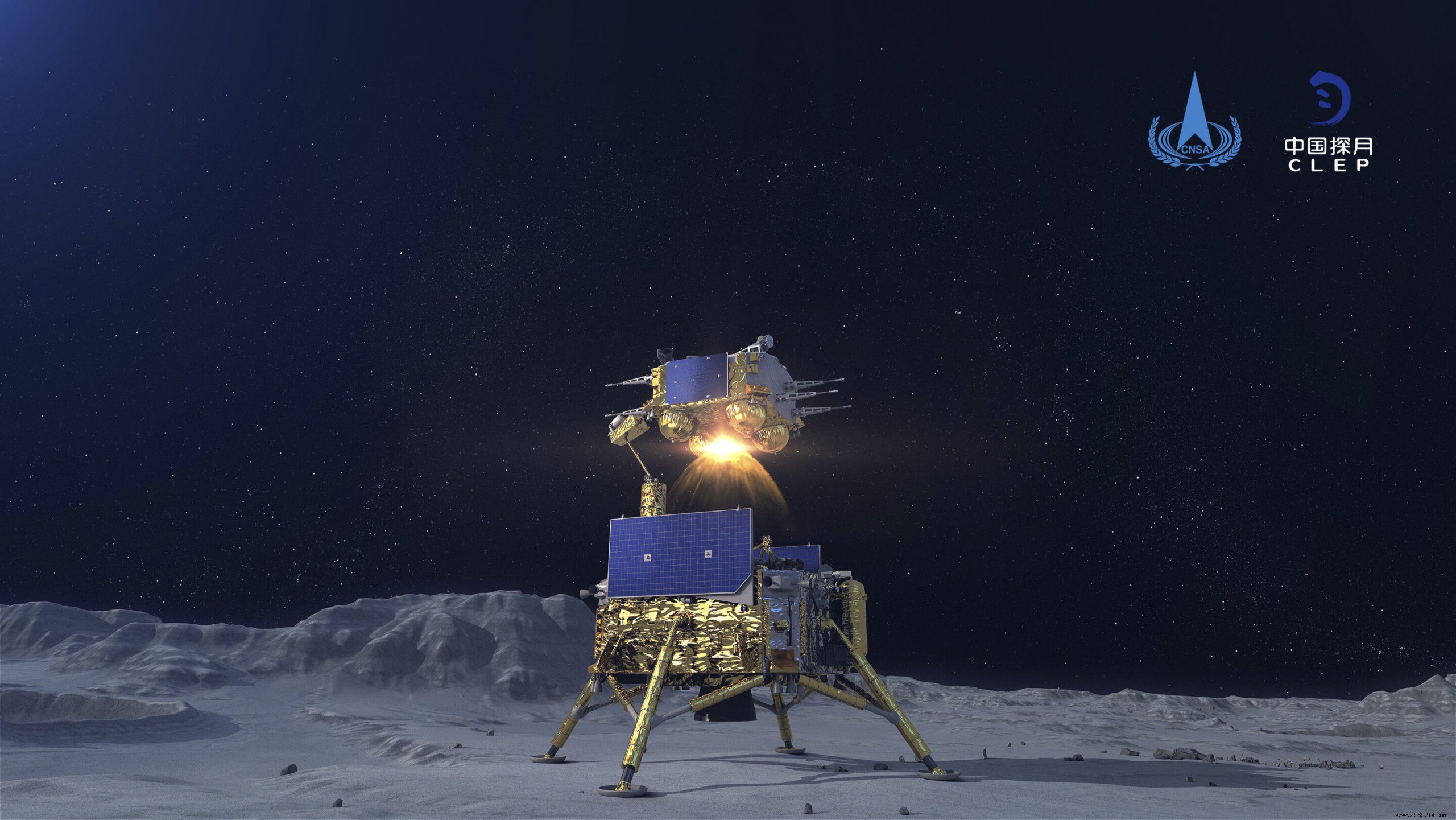The Chang’e’ 5 space capsule has just begun its return journey to deliver new lunar samples to Earth. If successful, China will become the third country to achieve this technical feat after the United States and Russia (ex-USSR).
On November 23, China launched its Chang'e 5 mission. The objective was to collect and bring back the first new lunar samples for nearly fifty years after the American Apollo program from 1969 to 1972 and the Soviet Luna 16 mission in 1970. For now, the mission is on track.
The samples were indeed successfully collected on December 1 and 2 . The ascent stage, capped above the Chang'e 5 lander, then took off the next day to position itself in lunar orbit where it was to meet the orbiter to transfer its cargo to it. The two ships finallysuccessfully reunited on Saturday, December 5 .
From then on, the return ship had to wait a few days in lunar orbit while a narrow window opened offering the shortest possible travel time.
This window finally opened this Sunday, December 13. According to the Chinese National Space Administration in a post on social media, the Chang'e 5 lunar probe therefore fired its four engines for about 22 minutes a few hours ago in a bid to extricate itself from the Moon's orbit. .
This return trip should normally take between three and four days , after which the ship will release its sample capsule in Inner Mongolia .

Scientists are obviously eager to be able to analyze these materials obtained on the surface in the region of Oceanus Procellarum, but also by drilling in the lunar crust. Unlike the samples previously brought back to Earth as part of the American and Soviet missions, these are a priori much younger , possibly offering insight into the history of the Moon.
The age of a rocky body can indeed be estimated according to the number of craters dug on the surface. We then start from the principle that the longer a body has existed, the more its surface is bombarded . However, it is not a very precise method of measurement. So far, estimates of the age of Oceanus Procellarum, where the samples were collected, have indeed varied over three billion to one billion years .
Also, by analyzing these new samples with state-of-the-art instrumentation (radiometric dating), researchers will this time be able to determine with precision the age of this lunar surface in particular. This work will also make it possible to refine our models aimed at better understanding the surfaces of Mars, Mercury and Venus.